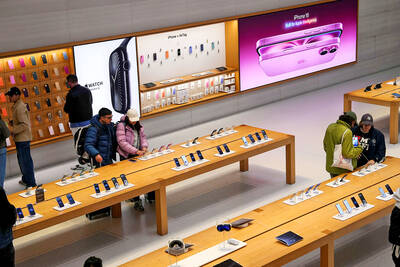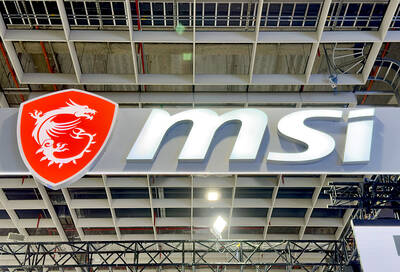When the giants of sumo wrestling prepared to step into the ring for last month’s grand tournament in Tokyo, Akiyoshi Takumori fired up his spreadsheet.
For Takumori, an economist at one of Japan’s biggest asset managers, the ancient sport is more than entertainment: It is an eye into how successful Japanese Prime Minister Shinzo Abe has been at unleashing the country’s animal spirits.
By counting the number of advertisements paraded before bouts — company names embroidered on Japanese banners and carried around the ring by a posse of men in kimonos — investors can gauge whether executives are bullish on the economy and willing to spend their companies’ cash, Takumori said.
The 58-year-old is looking for any edge to assess the outlook for Abenomics, and more specifically its impact on the stock market. After a rosy first three years under Abe, with the Nikkei 225 Stock Average more than doubling, Japanese shares tumbled this year to their worst start on record.
“The ads are like supplementary traffic lights to the main ones, regular economic indicators,” said Takumori, chief economist at Sumitomo Mitsui Asset Management Co in Tokyo. “If you watch them, you can tell whether the main lights will turn red or not.”
So what signals are the sumo ads flashing? Last month’s tournament had 1,872 company-sponsored banners over the 15 days it ran, 5.4 percent fewer than the record 1,979 advertisements at the event in Fukuoka in November last year.
That is still the second-highest on record, according to Takumori, who said people should not read too much into the drop.
It was mostly due to popular wrestlers being out injured, he said.
Japan’s TOPIX has also been buffeted by things outside its control. The measure has lost more than 9 percent this year, sucked into a global rout in equities caused by concerns about a slowdown in China and tumbling prices of oil and other commodities. The gauge closed 3.2 percent lower yesterday.
“The numbers should’ve been good, but because of abnormal conditions, they look bad,” Takumori said of the drop in ads.
Takumori began tallying the banners back in 1990 and soon discovered a correlation with GDP. In a recent example, when the number of ads tumbled in January 2012, GDP turned negative the next quarter.
Keeping count at sumo gives him a two-month head start on broader advertising statistics published by the government.
Each ad costs ¥62,000 (US$517), and companies must pay for at least one per day for the duration of the tournament, according to the sport’s administrator. Banners at the tournament represented everything from convenience store operator Lawson Inc to Suzusho Ltd, which makes beef jerky.
All bouts are aired live on NHK, the public broadcaster. About a quarter of households around Tokyo tuned in on the competition’s final day last month, according to Video Research Ltd.
“It’s not a big splurge, but companies wouldn’t be spending money on ads unless earnings were good” Takumori said.
Operating profit at companies in the Nikkei 225 rose to a record in the quarter ended in September last year, as the weaker yen continued to buoy exporters while an influx of tourists boosted domestic firms.
The quarterly Tankan index of confidence among big manufacturers also remained strong in December last year, but is forecast to fall next month, raising questions about whether firms will expand capital investment and raise wages.
Takumori said he was disappointed by the drop in ads. He said he was expecting a new record last month, too.
“It’s irritating,” he said. “It was unlucky.”

Meta Platforms Inc offered US$100 million bonuses to OpenAI employees in an unsuccessful bid to poach the ChatGPT maker’s talent and strengthen its own generative artificial intelligence (AI) teams, OpenAI CEO Sam Altman has said. Facebook’s parent company — a competitor of OpenAI — also offered “giant” annual salaries exceeding US$100 million to OpenAI staffers, Altman said in an interview on the Uncapped with Jack Altman podcast released on Tuesday. “It is crazy,” Sam Altman told his brother Jack in the interview. “I’m really happy that at least so far none of our best people have decided to take them

BYPASSING CHINA TARIFFS: In the first five months of this year, Foxconn sent US$4.4bn of iPhones to the US from India, compared with US$3.7bn in the whole of last year Nearly all the iPhones exported by Foxconn Technology Group (富士康科技集團) from India went to the US between March and last month, customs data showed, far above last year’s average of 50 percent and a clear sign of Apple Inc’s efforts to bypass high US tariffs imposed on China. The numbers, being reported by Reuters for the first time, show that Apple has realigned its India exports to almost exclusively serve the US market, when previously the devices were more widely distributed to nations including the Netherlands and the Czech Republic. During March to last month, Foxconn, known as Hon Hai Precision Industry

PLANS: MSI is also planning to upgrade its service center in the Netherlands Micro-Star International Co (MSI, 微星) yesterday said it plans to set up a server assembly line at its Poland service center this year at the earliest. The computer and peripherals manufacturer expects that the new server assembly line would shorten transportation times in shipments to European countries, a company spokesperson told the Taipei Times by telephone. MSI manufactures motherboards, graphics cards, notebook computers, servers, optical storage devices and communication devices. The company operates plants in Taiwan and China, and runs a global network of service centers. The company is also considering upgrading its service center in the Netherlands into a

Taiwan’s property market is entering a freeze, with mortgage activity across the nation’s six largest cities plummeting in the first quarter, H&B Realty Co (住商不動產) said yesterday, citing mounting pressure on housing demand amid tighter lending rules and regulatory curbs. Mortgage applications in Taipei, New Taipei City, Taoyuan, Taichung, Tainan and Kaohsiung totaled 28,078 from January to March, a sharp 36.3 percent decline from 44,082 in the same period last year, the nation’s largest real-estate brokerage by franchise said, citing data from the Joint Credit Information Center (JCIC, 聯徵中心). “The simultaneous decline across all six cities reflects just how drastically the market